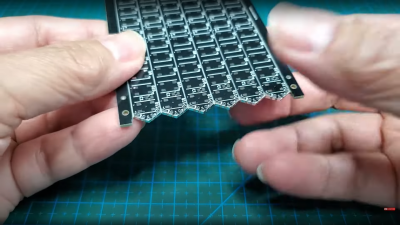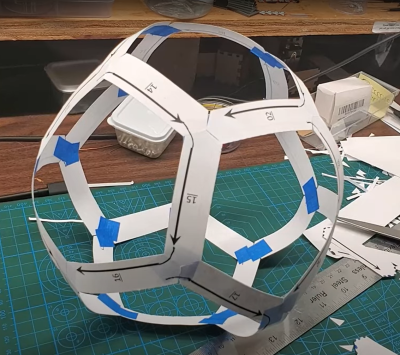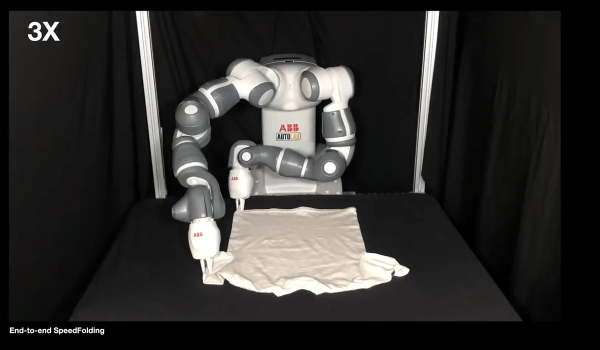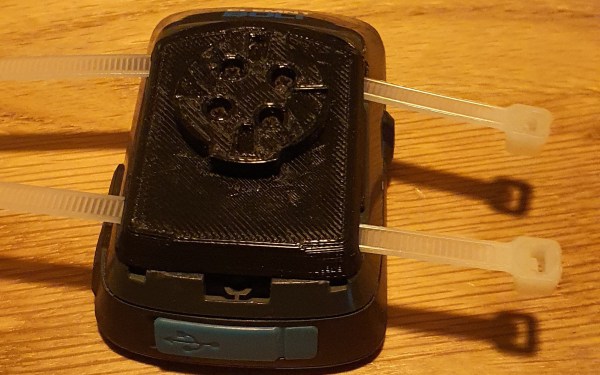It’s a skill that radio amateurs pick up over years but which it sometimes comes as a surprise to find that is not shared by everyone, the ability to casually glance at an antenna on a mast or a rooftop and guess what it might be used for. By which of course I mean not some intuitive ability to mentally decode radio signals from thin air, but most of us can look at a given antenna and immediately glean a lot of information about its frequency and performance. Is this privileged knowledge handed down from the Elmers at the secret ceremony of conferring a radio amateur’s licence upon a baby ham? Not at all, in fact stick around, and I’ll share some of the tricks. Continue reading “Identify That Antenna By Sight”
Europe’s Energy Squeeze Pushes Large Hadron Collider To Halt Operations
Energy prices have been in the news more often than not lately, as has war. The two typically go together, as conflicts tend to impact on the supply and trade of fossil fuels.
With Europe short on gas and its citizens contemplating a cold winter, science is feeling the pinch, too. CERN has elected to shut down the Large Hadron Collider early to save electricity.
Continue reading “Europe’s Energy Squeeze Pushes Large Hadron Collider To Halt Operations”
Robots Are Folding Laundry, But They Suck At It
Robots are used in all sorts of industries on a wide variety of tasks. Typically, it’s because they’re far faster, more accurate, and more capable than we are. Expert humans could not compete with the consistent, speedy output of a robotic welder on an automotive production line, nor could they as delicately coat the chocolate on the back of a KitKat.
However, there are some tasks in which humans still have the edge. Those include driving, witty repartee, and yes, folding laundry. That’s not to say the robots aren’t trying, though, so let’s take a look at the state of the art.
Continue reading “Robots Are Folding Laundry, But They Suck At It”
Hackaday Prize 2022: A Cheap And Effective Mouth Joystick Mouse
Some people have issues using regular computer mice, and need alternative input devices that suit their needs. [Olman Orozco] designed an affordable mouth-joystick intended to work as a mouse to suit that very use case.

The build is based on a simple USB gamepad. A mouse emulator program is used to turn the thumbstick movements into mouse movements, and button presses into mouse clicks.
The trick is that the thumbstick is turned into a mouth-activated joystick, making the device perfect for those with limited-to-no movement in their arms. This is achieved with a pen body used to extend the joystick so it can be readily actuated with the mouth. A custom puff-switch is also integrated into the mouth-joystick, built out of a balloon, bottle caps, and a micro switch. This enables the user to click on things without the need for another button.
Overall, it’s a great hack that turns cheap, everyday components into a useful piece of accessibility hardware. As a bonus, it can be built using only simple tools. [Olman] notes there’s no need for a 3D printer or other advanced parts or tools to build the device.
Game controllers are often important devices when it comes to accessibility hacking, as we’ve seen before. Continue reading “Hackaday Prize 2022: A Cheap And Effective Mouth Joystick Mouse”
2022 Hackaday Prize: Congratulations, Wildcard Winners!
The Wildcard Round is the wildest round, and the 2022 Hackaday Prize had a slew of great entries. We’ve winnowed the wildcards down to a large handful, and we’re happy to announce the finalists. Every winner receives a $500 award, and is automatically entered for the final round of the Hackaday Prize. The grand prize winners will be announced during Supercon on Nov. 5th, and we’ll be streaming so you can root for your favorites whether you’re with us in Pasadena or not.
So without further ado, the finalists. Continue reading “2022 Hackaday Prize: Congratulations, Wildcard Winners!”
This Infinity Dodecahedron Build Shows All The Tricks
The infinity dodecahedron is one of those super eye-catching builds that many of us hardware hackers have on our ‘build one day’ project list. The very thought of actually doing it strikes a little fear into the heart of even the most intrepid maker, once you start to think about all the intricate little details and associated ways it could all go horribly wrong. Luckily for us, [Hari Wiguna] has documented his latest build as a long video build log, showing lots of neat tricks and highlighting many problems along the way. With the eventual goal of removing many of the issues that make such a build tricky, [Hari] hopes to make it practically easy. Let’s see how that turns out!

A common route for such a build relies on appropriately shaped 3D printed frame parts, with some kind of clear plastic for the 12 faces, and LED strips stuck to the inside of each of the 30 edges. Whilst this works, [Hari] thought he could do a bit better, using butt-jointed PCBs as the frame material.
The PCBs handily double up as something to solder LEDs onto (because that’s what PCBs are mostly intended for!) as well as a way to pass power and data signals around the frame in a minimally visible way. As will become obvious from the lengthy discussion in the video, a few simple tricks here and there are needed to make this strategy work. With the recent proliferation of PCB modules using castellated edges for termination, the usual Chinese PCB fab services have all started offering very good value services for this feature. Once a PCB feature that was a specialized (read that as ‘expensive’) offering, it is now quite affordable on your average maker’s budget.

One immediate practical issue was how to pass the data connection around from edge to edge, given that there are three edges per vertex. The solution [Hari] came up with was simple, just duplicate the signals on each end of the PCB, so the data out signal can be tapped from either end, as required.
Even with 3D printed jigs to hold the PCBs at just the right angles, there’s still some wiggle and a little risk of edges not quite aligning, due to accumulated errors around the frame. It did come together in the end, with the expected spectacular visuals. We’re sure many of you will be waiting for [Hari] to release the next version of the design to the community, hopefully with even more of the ease-of-build issues resolved, because we want one even more now.
Naturally, this is by no means the first infinity platonic solid we’ve seen, here’s a smaller one for starters. If you remove the mirrors and LEDs, then you’re just left with a plain old dodecahedron, like this cool folding project.
Continue reading “This Infinity Dodecahedron Build Shows All The Tricks”
Repairing A Bike GPS With 3D Printing
We love hacks that keep gadgets out of the trash heap, and [Brieuc du Maugouër] has us covered with this 3D printable replacement mount he designed for his bike GPS.
One of the most frustrating ways a gadget can fail is when a small, but critical part of the device fails. [du Maugouër] combined a 3D printed back and four M2x6mm screws to make a robust new mount to replace the broken OEM mount on his handlebar-mounted GPS. Slots for zip tie mounting are included in case the replacement mount breaks before yet another replacement can be printed. Apparently [du Maugouër] agrees with Chief O’Brien that “in a crunch, I wouldn’t like to be caught without a second backup.” [Youtube]
It’s exciting that we’re finally in a time when 3D printed replacement parts are living up to their potential. This would be a lot easier if more manufacturers posted 3D printed design files instead of getting them pulled from 3D file platforms, but makers will find a way regardless of OEM approval.
We’ve covered a lot of bike hacks over the years including DIY Bike Computers and GPS Trackers. Do you have a project that keeps something from becoming trash or might save the world another way? There’s still time to enter the Save the World Wildcard round of the Hackaday Prize (closes October 16th).


















